Whatever Happened to Baby Jane (she’s doing fine, thanks for asking)
Leave a commentDecember 30, 2017 by heligena
‘Tis the season of nostalgia; a time to sit back and re-watch those movies that remind us of a simpler time. A better time (which the way the world is going, will be any year that happened before 2016.) And with the release of Ryan Murphy‘s excellent biographical series Feud: Bette and we here at offtherecord decided to take another look at the enduring classic Whatever Happened to Baby Jane to try and work out why it holds such power and interest so many years after it was made.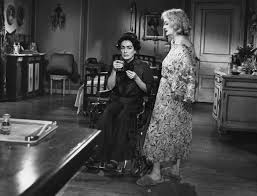
After watching the film a few days ago and discussing amongst ourselves at length, we complied the following list of five reasons that could explain the films enduring power and ability to thrill its audience whatever their age. Of course, there will always be many arguments as to why the movie is so popular (all of them valid most likely) but these are the main ones we felt gave the film its sense of individuality and class.
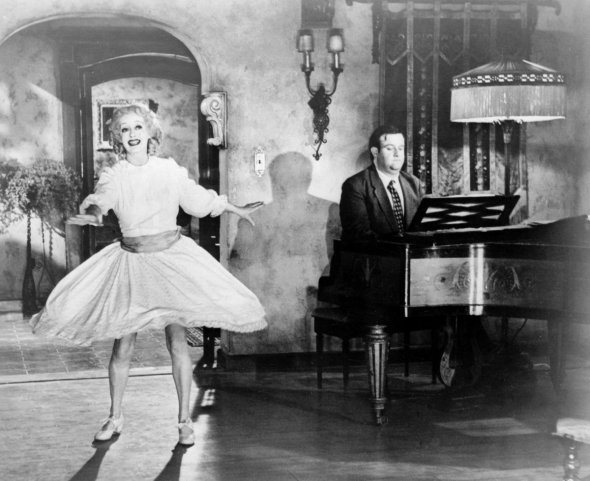
So, sit back with your turkey leftovers and your cheese ends and enjoy reading through our take on why Robert Aldrich’s Whatever Happened to Baby Jane has clung to our imagination all these years…
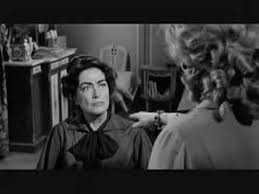
- Ok well firstly, anyone who is drawn to a good story has wondered whether the creator’s life had any influence on their work. It’s part of being human, right? French philosopher Roland Barthes wrote his damning essay The Death of the Author on this very topic concluding that traditional criticism’s practice of incorporating the intentions and biographical context of a writer/actor into readings of their work was a ridiculous notion. He thought it a sloppy and flawed way of looking at artistic creations. And yet…despite his disapproval, the legendary battle between Joan Crawford and Bette Davis has kept movie goers fascinated for years; tales of their passive aggressive disputes on and off set becoming legendary in their own right. Why else would Ryan Murphy write his popular series to the acclaim of TV critics? Why else would Shaun Considine’s book The Divine Feud still sell so many copies? When the two fading legends finally shared the screen in this movie, that enthralling background dynamic was always going to capture people’s attention- Hell the studios basically used it to sell the flick to the general public so it’s hard to fault anyone who watches WHTBJ purely for the chance to see if they can pinpoint any of that longstanding hostility on screen. Low brow it may be but in terms of a draw, but rubbernecking is a universal motivation and for that reason alone the film continues to enthral an audience hoping to see if Davis’s kick to the head was real or if Crawford genuinely wore a weight belt for the scene where Davis has to drag her across the hall. Sometimes we just can’t help ourselves (and nor should we.)
- The Artistic Decisions.
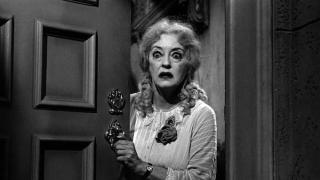 Famously, Bette Davis made many demands on the shoot before and during filming. The obvious one we’ve all heard about was her decision to wear all that garish make up to depict her character as an unstable child-like gargoyle. Not everyone knows though that Davis also argued for the film not to be shot in colour as originally planned by Aldrich and Warner Bros. She pushed for black and white cinematography instead, claiming that colour would make a tragic story look too ‘damned pretty’. And she had a good freaking point. This decision, unpopular though it may have been with the studio actually enhances the films timeless quality and in terms of emotional impact does exactly what she says it would, giving the tale a horrific visceral quality that it probably wouldn’t have had otherwise. Because of the star’s foresight and appreciation of technique, the film went on to become a cult classic, and that sense of bullish cinematic intellect behind the scenes clearly had more than a little influence on that fact.
Famously, Bette Davis made many demands on the shoot before and during filming. The obvious one we’ve all heard about was her decision to wear all that garish make up to depict her character as an unstable child-like gargoyle. Not everyone knows though that Davis also argued for the film not to be shot in colour as originally planned by Aldrich and Warner Bros. She pushed for black and white cinematography instead, claiming that colour would make a tragic story look too ‘damned pretty’. And she had a good freaking point. This decision, unpopular though it may have been with the studio actually enhances the films timeless quality and in terms of emotional impact does exactly what she says it would, giving the tale a horrific visceral quality that it probably wouldn’t have had otherwise. Because of the star’s foresight and appreciation of technique, the film went on to become a cult classic, and that sense of bullish cinematic intellect behind the scenes clearly had more than a little influence on that fact.
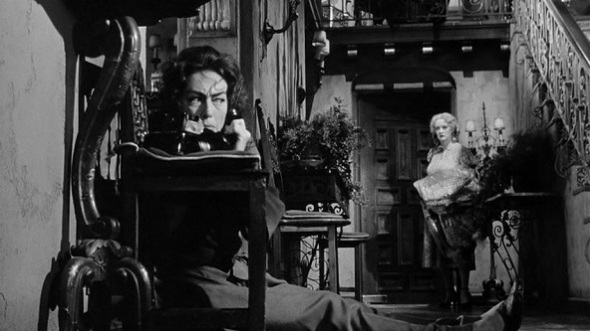
- Also in terms of genre, the film is a freaking Rubik’s cube. Is it a social satire on the ‘popular until you’re not’ ethos of Tinseltown? A psychological thriller focusing on sisterly jealousy? A straight up horror? The honest answer is all of the above. And more. In fact, the movie actually uses tropes and conventions from every single one of the genres mentioned above including (but not limited to) snappy character dialogue, shadowy claustrophobic locations and underlying themes of madness and crippling injury. It’s external scenes at the lot skewer Hollywood’s chew ‘em up and spit ‘em out mentality while it’s internal scenes focus on the deteriorating mental states of the two antagonists, through the medium of their aging flesh. It’s all human frailty in one little microcosm. Whatever Happened to Baby Jane really is in a category all its own, a magpie self-creating genre that picks all the best bits from the others around it and uses them for its own ends. It even gave that category a name- the Hagsploitation flick (a name we don’t care for but is succinct if nothing else.) And for that boundary-busting reason alone, it deserves all the longevity it’s won.
- To be fair, we would never argue that the film is a bastion of progressive PC thinking- it was made by smarm-master Jack Warner of Warner Bros studios after all.
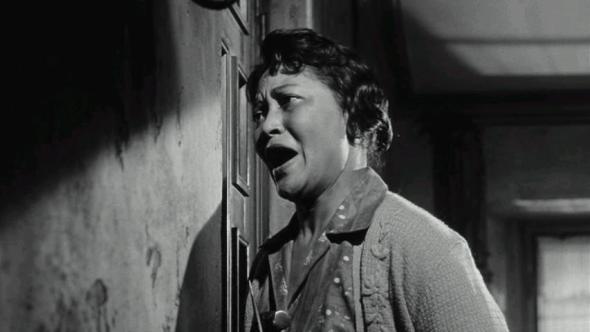 But the fact that the only character who displays a modicum of unselfish empathy (and concern for anyone outside of herself) is Blanche’s housekeeper Elvira, aka the only person of colour in the whole flick, does give one pause when that realisation sinks in. And for a film that completely centres on women’s issues to be so successful with the general public can’t help but warm the heart a little, especially at a time when the two stars were considered box office poison by their peers. We don’t think its happenstance either that the only significant male character in the story is a weak, browbeaten individual ruled by his mother’s and Jane’s ridiculous attentions- a retort perhaps, to all those that claimed the movie business ran on square-jawed heroes and dashing romances. One of these facts caught on celluloid might have been unusual.
But the fact that the only character who displays a modicum of unselfish empathy (and concern for anyone outside of herself) is Blanche’s housekeeper Elvira, aka the only person of colour in the whole flick, does give one pause when that realisation sinks in. And for a film that completely centres on women’s issues to be so successful with the general public can’t help but warm the heart a little, especially at a time when the two stars were considered box office poison by their peers. We don’t think its happenstance either that the only significant male character in the story is a weak, browbeaten individual ruled by his mother’s and Jane’s ridiculous attentions- a retort perhaps, to all those that claimed the movie business ran on square-jawed heroes and dashing romances. One of these facts caught on celluloid might have been unusual. 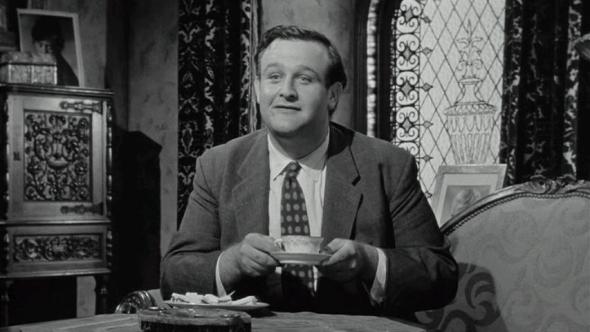 But all of them built into the same picture manages somehow to hold up a startling middle finger to all the naysayers with their Hollywood norms; giving the movie a unique character that defines any attempts to make it cliched or just a movie that’s representative of its period and nothing more.
But all of them built into the same picture manages somehow to hold up a startling middle finger to all the naysayers with their Hollywood norms; giving the movie a unique character that defines any attempts to make it cliched or just a movie that’s representative of its period and nothing more.
- And now finally (and after much deliberation) we come to what we think is the ultimate reason for the film’s undiminishing popularity…. And that is its main character herself- Baby Jane. Let’s get one thing clear from the outset. Baby Jane Hudson is a terrible person. We all know this; it’s evident from that first temper tantrum in front of all her fans and it’s even more obvious the longer she stays in that large echoing death chamber she calls a home.
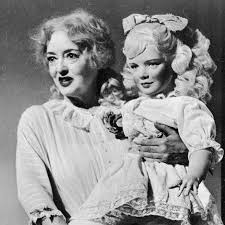 Baby Jane is a vile, selfish horror-show of a human being; emotionally stunted, infantilised and cruel. There’s no way around it. Intellectually we know this from the outset- we can see it in the way she’s unable to change from that bratty child star from the opening scenes who clings to the doll version of herself. Hers is the absolute inversion of the hero’s journey we all expect in a film. She is stagnant. Stunted. And rationality tells us that we should hate her for it, that we should NOT at any point feel sorry for her. But…
Baby Jane is a vile, selfish horror-show of a human being; emotionally stunted, infantilised and cruel. There’s no way around it. Intellectually we know this from the outset- we can see it in the way she’s unable to change from that bratty child star from the opening scenes who clings to the doll version of herself. Hers is the absolute inversion of the hero’s journey we all expect in a film. She is stagnant. Stunted. And rationality tells us that we should hate her for it, that we should NOT at any point feel sorry for her. But…
But…because Bette Davis’s performance is so wild, so nuanced and yet unhinged, because we can’t take our eyes off her cracking death mask, we can’t help but feel sympathy for her (even before the film’s jaw dropping revelation on the beach.) It’s outside of our control. And that conflict going on inside you while watching- the way your brain fights against your unruly emotions inevitably forces you into a position of cognitive dissonance. It’s unavoidable. 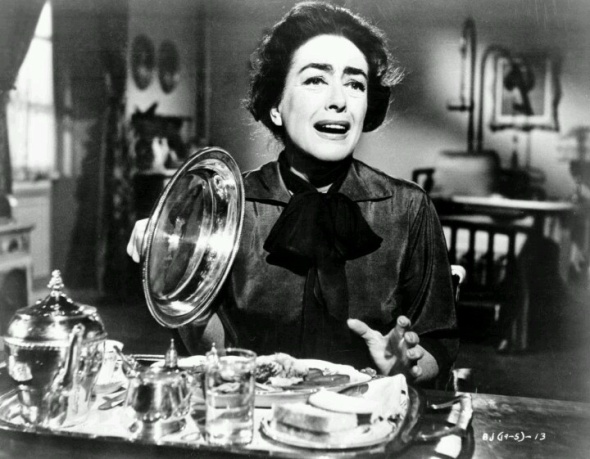 The film forces you into feeling things you then immediately judge yourself for feeling. And that uncomfortable sensation, that trap you fall into that turns your heart and mind into a battleground makes you want to keep watching to work out how exactly you found yourself here. How you found yourself caught up in a moral dilemma as twisted and horrible as the characters on screen that inspired it. That’s why the film is so damned good. Because it puts you in Jane and Blanche’s position without any idea of how to get yourself out. It infects you with its moral entropy. With its ethical quandary. And come on, if that isn’t the smartest move a film could make, then we don’t really know what is. It’s a masterstroke. And the number one reason (at least for us) why you can’t watch Whatever Happened to Baby Jane without feeling a kind of mesmerised sense of unease as you do. It pricks at your skin without you even knowing, the way all great films should.
The film forces you into feeling things you then immediately judge yourself for feeling. And that uncomfortable sensation, that trap you fall into that turns your heart and mind into a battleground makes you want to keep watching to work out how exactly you found yourself here. How you found yourself caught up in a moral dilemma as twisted and horrible as the characters on screen that inspired it. That’s why the film is so damned good. Because it puts you in Jane and Blanche’s position without any idea of how to get yourself out. It infects you with its moral entropy. With its ethical quandary. And come on, if that isn’t the smartest move a film could make, then we don’t really know what is. It’s a masterstroke. And the number one reason (at least for us) why you can’t watch Whatever Happened to Baby Jane without feeling a kind of mesmerised sense of unease as you do. It pricks at your skin without you even knowing, the way all great films should.
Yep, so those are our thoughts on why WHTBJ is such an enduring piece of celluloid. There are probably hundreds of other reasons floating around in the grand expanse of the interweb, explained much more succinctly and eloquently than these here, but for us at least, those listed above were why we think the movie is so darn special.
If you have thoughts of your own on the film, positive or negative, do stop by and let us know. We’d love to chat some more about the flick or those involved with making it especially before the newest ‘in production’ version of the tale hits cinemas (we’re not joking, Walter Hill is slated to write and direct based off the original Lukas Heller screenplay and there’s talk Meryl Streep might be involved- horrified face emoji) Oh, and if you do have the time to catch Murphy’s Feud: Bette and Joan on FX or BBC iPlayer then do yourself a favour and check out all eight episodes, it’s an absolute treat.
Otherwise, we’ll see you on the flipside peeps….

